Disclosure: Some of the links on this site are affiliate links. If you make a purchase through one of them, I may earn a small commission at no extra cost to you. Read my full disclaimer here. Thank you for your support!
Discover if Palermo is worth visiting in this honest guide following my month-long stay. Uncover 15 compelling reasons to explore Sicily’s gritty capital, plus 5 real challenges to consider (as well as how to deal with them).
Situated on Sicily’s sun-drenched northern coast, Palermo is a city that defies easy categorisation.
Having spent a month immersing myself in its labyrinthine streets, I can confirm that Palermo is not a destination that comes wrapped up, all shiny and clean with a neat bow on top.
In fact, it’s quite the antithesis of this.
Palermo is a city of contrasts, where opulent palaces hide behind crumbling facades, and where the agonising captures of the No Mafia Memorial sit just streets away from bustling markets filled with happy diners.
Each street corner of the place tells a story, from the Norman conquest to the struggles against organised crime.
When I arrived in Palermo, having booked a monthly apartment rental there somewhat on a whim – although in hindsight, I’d view it now as intuition – I didn’t quite know what to expect.
As the weeks went on, however, I found myself pulled in by the contradictions, and intoxicated by the vibrant chaos and palpable energy that pulses through every corner of the city.
From the maze-like markets to the captivating mix of Norman, Arab, and Baroque architectural styles, Palermo reveals itself as a city with layers waiting to be explored.
In this guide, we’ll weigh up the pros and cons of visiting Palermo, based on my extended stay and thorough exploration of the city. We’ll examine why this complex, often misunderstood destination might just be the most rewarding Italian city you’ll ever visit – if you’re willing to embrace its idiosyncrasies and look beyond the surface.
Whether you’re a history buff, a food enthusiast, or simply a curious traveller seeking an authentic Italian experience, join me as we unpack the question: Is Palermo worth visiting?
EDITOR’S NOTE | For even more insider tips for visiting Palermo, be sure to check out the additional Palermo resources on this blog.
Essential links for your Palermo trip
Transport: book your train tickets here and search for and book car rentals here.
Top rated tours & experiences in Palermo:
⭑ Palermo Original Street Food Walking Tour by Streaty
⭑ No Mafia Walking Tour
⭑ Street Food and History Walking Tour
⭑ Monreale and Cefalù Half-Day Trip
Cultured Voyages’ Accommodation Picks:
→ Porta di Castro Boutique Hotel(luxury pick with pool)
→ PALAZZO SANTAMARINA Luxury Suite & Spa(boutique lodging in restored palazzo)
→ Family Affair Palermo (stunning B&B in beautiful building)
→ Mamamia al Teatro Biondo(stylish budget pick)
Don’t leave home without!
The Rough Guide to Siciliy // Midnight in Sicily // these *excellent* compression packing cubes // rechargeable pocket-fan
In Short: Is Palermo Worth Visiting?

Yes, Palermo is worth visiting – but only if you’re up for a city that’s raw, real, and endlessly fascinating. Its mix of Arab-Norman palaces, Baroque churches, and bustling street markets make it unlike anywhere else in Italy. Food lovers will relish the chance to snack on arancine, panelle, and Sicilian sweets straight from the source. But Palermo’s grit is part of the package – expect crumbling facades, chaotic traffic, and a summer heat that’ll have you craving shade.
Pros: Why You Should Visit Palermo
Palermo Has A Rich and Unique History

Palermo’s history is like nothing else I’ve encountered in Europe. You hear the phrase “melting pot” thrown around a lot, but this city really lives up to it.
Founded by the Phoenicians back in 734 BC, Palermo has since been ruled by just about everyone – Carthaginians, Romans, Arabs, Normans, Spanish… the list goes on. It’s often called the most conquered city in the world, and walking its streets, you can see why.
What fascinated me most was how these cultures didn’t just replace each other, but blended together. The Arab-Norman period (9th-12th centuries) is a prime example. I spent ages in the Palatine Chapel, marvelling at how it mixes Byzantine mosaics, Islamic-style wooden ceilings, and Norman architecture. It’s a mash-up you won’t find anywhere else in Europe.
Even the city’s layout tells a story. The main street, Via Vittorio Emanuele, follows the line of the ancient Greek-Roman Cassaro. And scattered throughout the city, you’ll find everything from Arab-influenced markets to grandiose Spanish Baroque churches.
Every corner of Palermo seems to hold a piece of this layered history. It’s not just about seeing old buildings – it’s about experiencing centuries of cultural blending in action, and that is really fascinating to experience as someone who loves history.
It’s A Feast for Architecture Lovers
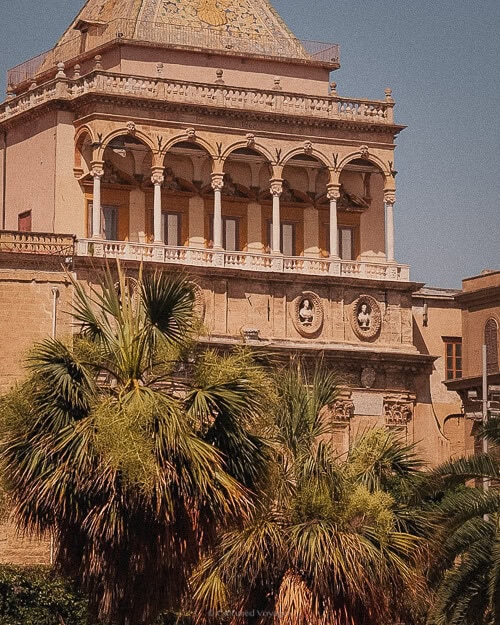
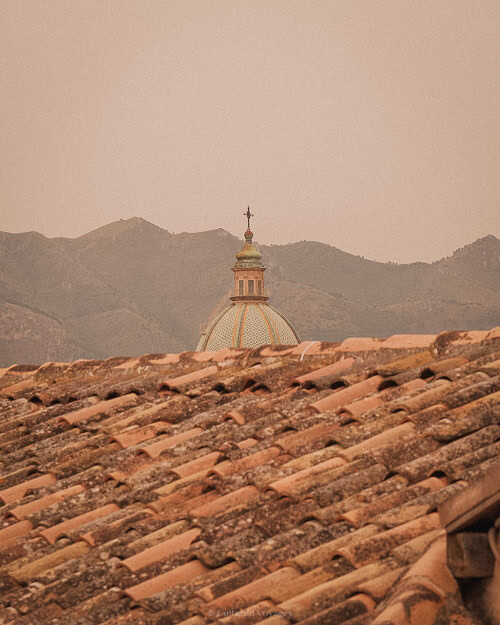

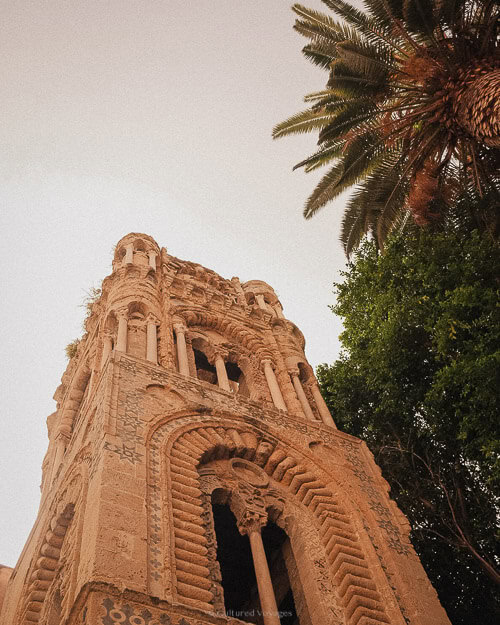
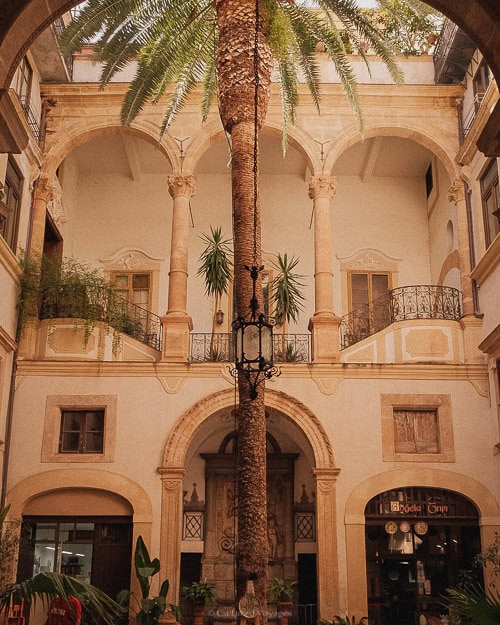
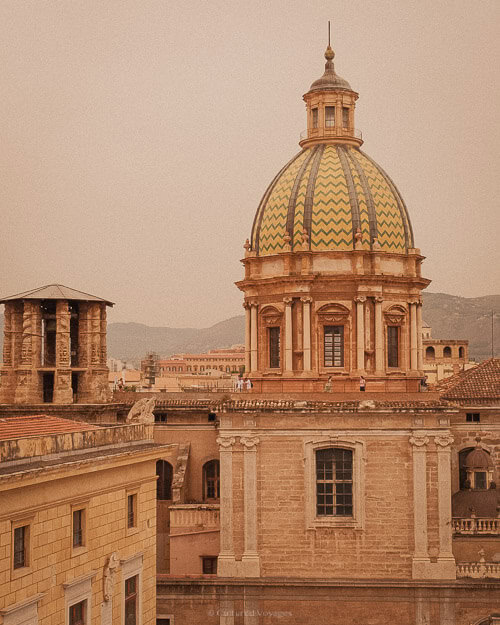
If you’re anything like me and find yourself constantly looking up at buildings, Palermo will give you a serious crick in the neck – in the best possible way. The city is a mishmash of architectural styles that shouldn’t work together but somehow do.
I was particularly struck (and I’d fashion that most visitors are) by the Norman-Arab-Byzantine fusion, a style unique to Sicily. The Chiesa di San Giovanni degli Eremiti, with its distinctive red domes, looks like it could have been plucked from North Africa and dropped into the heart of Palermo.
Then there’s the Baroque. The Chiesa del Gesù left me slack-jawed. Its interior is a riot of marble inlays, frescoes, and stucco work that’s so over-the-top it’s brilliant. I spent ages in there, trying to take in every detail.
But it’s not all ancient history. I was surprised to find pockets of Art Nouveau (or Liberty style, as it’s known in Italy) scattered throughout the city. The Teatro Massimo, Italy’s largest opera house, is a prime example, its grandeur a reminder of Palermo’s more recent past.
Sadly, however, many of Palermo’s finest Art Nouveau mansions were cleared to make way for brutalist property development in the post-WWII era, in what became known as the ‘Sack of Palermo‘.
Churches That Showcase Palermo’s Artistic Legacy

Palermo’s churches offer a crash course in the city’s artistic and cultural evolution.
The Palatine Chapel, housed within the Norman Palace, is truly extraordinary.
Its walls are adorned with intricate Byzantine mosaics, while the ceiling showcases elaborate muqarnas – a type of decorative vaulting typically found in Islamic architecture. This blend of Norman, Byzantine, and Arab influences perfectly encapsulates Sicily’s unique cultural fusion.
A short walk away, the Chiesa del Gesù presents a stark contrast. It’s an exemplar of Baroque opulence, with every surface lavishly decorated in polychrome marbles, frescoes, and stucco work. The sheer level of detail is almost overwhelming, but it vividly illustrates the Church’s power and wealth during the Counter-Reformation era.
For a completely different experience, I recommend stepping into San Cataldo. Its bare stone walls and simple domes offer a refreshing minimalism after the Baroque excess, and it’s very ‘Knight’s Templar-esque’. The church’s distinctive red domes, visible from the street, also serve as a subtle reminder of Palermo’s Arab past.
Right next door, the Martorana church is renowned for its spectacular Byzantine mosaics, and rightly so. The image of Christ Pantocrator in the dome is particularly striking.
What I found most interesting here is how the church’s artwork chronicles Sicily’s shifting power dynamics – you can see Norman kings depicted in Byzantine style, a visual testament to the island’s complex history. If I was pushed, I’d probably say that it was my favourite of Palermo’s churches.
It’s An Unexpected Paradise for Art Lovers

If you think Palermo’s all about street food and crumbling palazzos, think again. This city’s got an art scene that completely holds its own too.
First up is Palazzo Abatellis. Despite the lack of aircon amidst a heatwave in July, I spent hours in this place, and for good reason. The star of the show is the 18-feet-tall ‘Triumph of Death‘ fresco. It’s enormous, it’s grim, and it’s positively captivating. Picture Death on a skeletal horse, mowing down everyone from popes to peasants. Cheerful? Not exactly. Unforgettable? Absolutely.
But it’s not all doom and gloom. In the same museum, you’ll find Antonello da Messina’s ‘Virgin Annunciate‘. It’s a small painting that packs a punch – Mary’s expression is so lifelike, you’d swear she’s about to speak.
Now, let me let you in on my little secret: Palazzo Butera. This was possibly the highlight of my whole entire trip. It’s a 18th-century palazzo that’s been transformed into a contemporary art space.
The blend of old and new is mind-blowing – you’ve got cutting-edge installations right next to centuries-old frescoes. The best part is that it’s often practically empty. I had whole rooms to myself, which made for an incredibly intimate art experience – imagine having the run of an entire palace, filled with art, all to yourself!
For a more modern fix, check out MACRO (Museum of Contemporary Art Riso). They do a great job of showcasing Sicilian artists alongside international names.
It Has a Unique Identity Shaped By Its Past

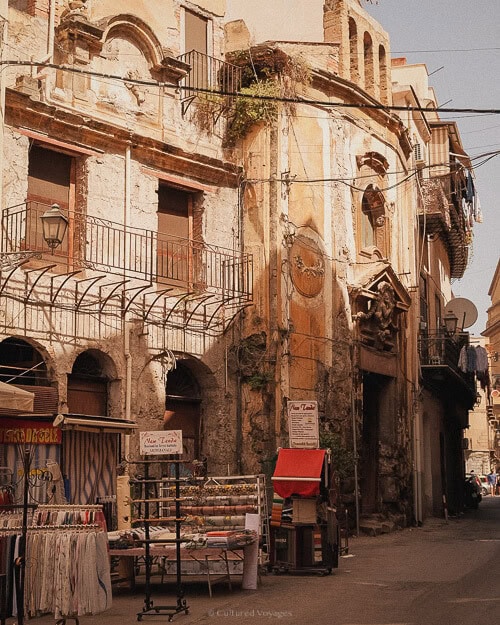
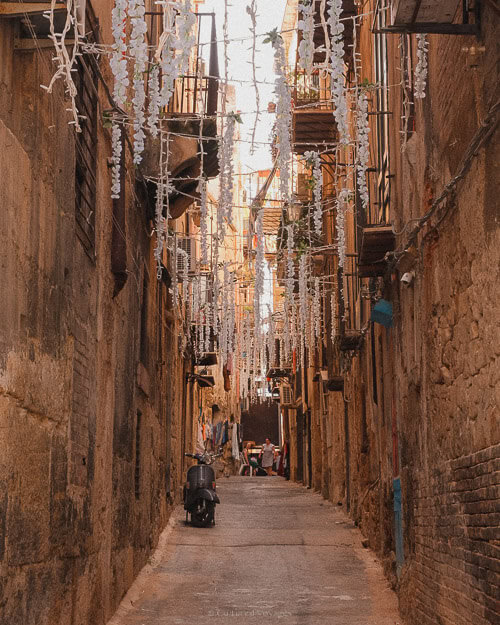

Palermo wears the scars of its past openly, particularly those from World War II. Walking through the city centre, I was struck by the visible reminders of wartime bombing. The area around Via Maqueda and Corso Vittorio Emanuele bears witness to this turbulent history.
I remember turning a corner near the Quattro Canti and coming face to face with a building that was half restored, half crumbling – a stark visual representation of Palermo’s ongoing journey of regeneration. The contrast was jarring yet oddly beautiful.
In the Kalsa district, once the fortified Muslim quarter, the effects of the war are particularly evident. The ruins of Santa Maria dello Spasimo church, roofless since the bombing, now serve as a hauntingly beautiful cultural venue.
The post-war reconstruction also left its mark. Walking down Via della Libertà, I noticed the stark difference between the Liberty-style buildings of the early 20th century and the more utilitarian structures that sprung up after the war. This architectural timeline tells the story of a city rebuilding itself, for better or worse.
This mix of old and new, damaged and restored, gives Palermo a rather unique character. It’s not always pretty, but at least it’s genuine in a world of increasingly homogenised city centres.
Palermo Has Got a Quirky Character

If you’re after a predictable Italian holiday, Palermo might not be the place for you. This city has a knack for throwing curveballs that’ll make you wonder if you’ve stepped into some surreal alternate universe.
During my month in Palermo, I quickly learned to expect the unexpected.
Take the Capuchin Catacombs, for instance. It’s not every day you find yourself face to face with thousands of mummified bodies, some still eerily well-preserved in their centuries-old finery. It’s macabre, sure, but also oddly fascinating – a stark reminder of Palermo’s complex relationship with death and remembrance.
But Palermo’s quirkiness isn’t confined to tourist attractions. It spills out onto the streets in the most unexpected ways. I lost count of the times I’d round a corner and stumble upon a scene that seemed plucked from a Fellini film.
The most ‘Palermo’ moment of all was when I nearly collided with a young man and his pony on a narrow back street. Yes, you read that right – a pony, clip-clopping through the residential areas as if it were the most natural thing in the world.
These moments of whimsy and weirdness are what give Palermo its unique flavour. It’s a city that doesn’t take itself too seriously, where the line between the ordinary and the extraordinary is delightfully blurred.
Vibrant Street Life and Markets






Palermo’s streets are its lifeblood, and nowhere is this more evident than in its markets. Ballarò, the city’s oldest food market and one of the top things to do in town, is a sensory overload in the best possible way. The vendors’ cries, known as ‘abbanniate‘, create a unique melody that’s as much a part of the market as the produce itself.
What struck me about Ballarò was its international flavour. Alongside traditional Sicilian fare, I found stalls selling foods from North Africa, Sri Lanka, and Bangladesh. It’s a testament to Palermo’s history as a cultural crossroads.
Vucciria market, meanwhile, transforms as day turns to night. By day, it’s a typical produce market. But as evening falls, it becomes the beating heart of Palermo’s nightlife. The narrow streets fill with locals, students and tourists alike – it’s almost like an open-air nightclub, or a music festival.
An Unparalleled Culinary Scene

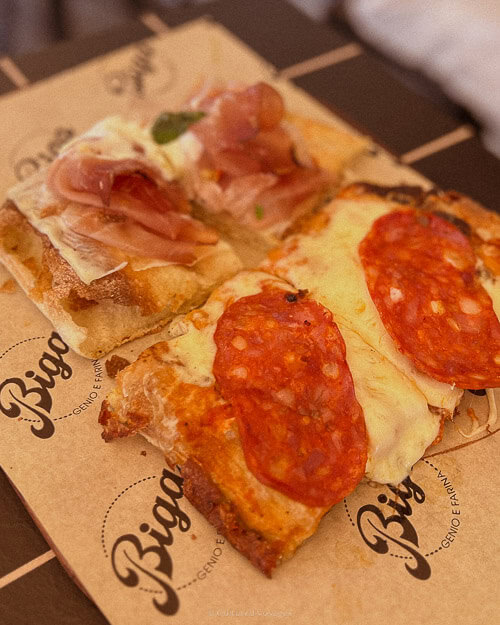
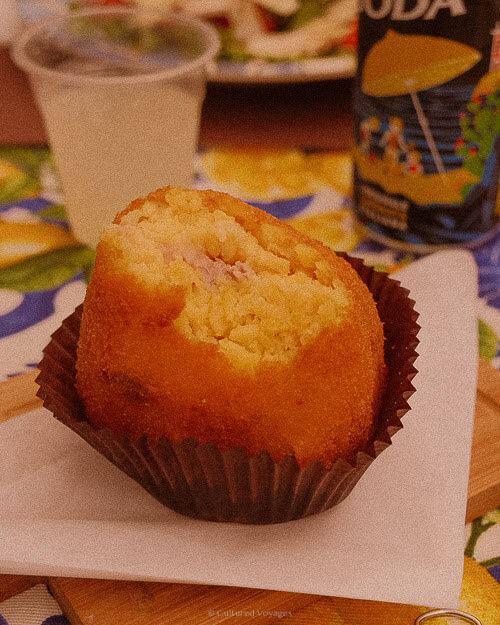

Palermo’s food scene is a reflection of its complex history, and it’s a joy to explore. If you’re curious about what to eat in Palermo, there’s no shortage of delicious street food and traditional Sicilian meals to sample.
The star of the show has to be the street food. Arancine (or arancini, depending on where you are in Italy) are a must-try. These deep-fried rice balls come with various fillings, but the classic meat ragù version was my favourite.
Then there’s panelle, chickpea fritters that are crispy on the outside and creamy within. I often grabbed these stuffed into a sesame bun for a quick lunch. For the adventurous, there’s pani ca meusa – a spleen sandwich that’s a true Palermo speciality. I can confirm, however, that I was not adventurous enough to try this one!
But Palermo isn’t just about street food. The seafood here is exceptional, given the city’s coastal location and you can expect to find it served up all manner of ways in the many trattoria that dot the streets.
And let’s not forget the pizza. While Naples might be more famous for it, Palermo holds its own. The sfincione, a thick-crust Sicilian pizza is a local favourite that quickly became mine too – it’s widely available by the slice meaning it’s perfect for grabbing on the go.
For dessert, cannoli are ubiquitous and delicious. The crisp shell filled with sweet ricotta is the perfect end to any meal. Or try the refreshing granita, especially welcome during the hot summer months. You’ll spot locals having them at breakfast time.
For a more immersive culinary experience, explore the city’s flavours by joining a highly recommended Palermo food tour for an insider’s perspective.
Palermo Is a Gateway To More of Sicily

While Palermo itself is packed with attractions, it’s also an excellent base for exploring Sicily.
Monreale, just 8km southwest of Palermo, is home to a cathedral that rivals anything in the city. Its Byzantine mosaics, covering over 6,000 square meters, are arguably even more impressive than those in the Palatine Chapel. The bus journey takes about 30 minutes, making it an easy half-day trip.
For those seeking a beach escape, Mondello lies just 11km north of Palermo. Its 1.5km stretch of white sand and crystal-clear water offers a perfect contrast to the urban landscape.
Cefalù, about an hour east by train, presents a picturesque blend of beach town and medieval architecture. Its Norman cathedral, begun in 1131, is a UNESCO World Heritage site. The old town’s narrow streets, lined with restaurants and shops, lead down to a beautiful sandy beach. We spent a lovely few days there, staying at the Hotel Kalura.
For a more ambitious day trip, consider the Valley of the Temples in Agrigento. It’s a 2-hour train journey each way, but the sight of well-preserved Greek temples dating back to the 5th century BC is truly spectacular. The archaeological park covers 1,300 hectares, so allow plenty of time to explore.

Insider Tip
If you’d like to leave the hassle of logistics to someone else, you could consider taking one of the following highly-rated experiences:
It Feels Like an Authentic Travel Experience






A standout thing about Palermo is how ‘genuine’ the city feels. Unlike some of Italy’s more touristy cities, Palermo doesn’t feel like it’s putting on a show for visitors.
In the evenings, I loved watching the Palermitan version of the passeggiata, the traditional Italian evening stroll. Via Maqueda and its offshoots would also become mobbed with both locals and tourists, indulging in pre-dinner drinks and chats.
The city’s rhythm takes some getting used to. Shops closing for the afternoon riposo might frustrate at first, but it’s part of the genuine southern Italian pace. Embrace it, and you’ll find yourself syncing with the city’s daily rhythms.
What also struck me was the warmth of Palermitans. Despite my mangled Italian, locals often went out of their way to help or chat via pigeon English and hand gestures.
In Palermo, you’re not just ‘seeing Italy – you’re living it, unfiltered and unapologetic. It’s a city that doesn’t compromise its identity for tourism, and that’s precisely what makes it so captivating.
There Are Diverse Accommodation Options

Palermo offers a range of unique places to stay, from renovated historical buildings to modern boutique hotels. The same can be said of its neighbourhoods – whether you prefer the bustle of markets or the calm of elegant boulevards, there are plenty of options when deciding on the best places to stay in Palermo.
During my month-long stay, I rented an apartment in the Il Capo district, which gave me a real taste of local life. Each morning, upon opening the shutters, we’d bid good morning to the builders who were renovating the building directly across from ours.
Just down the street from my apartment was a fascinating example of Palermo’s regeneration efforts: Palazzo Santamarina. Once a crumbling noble residence, it’s now been transformed into a complex housing luxury suites, a gym (where I worked out), a spa, several eateries and even a hair salon.
Another notable property, Family Affair Palermo is worth considering if you’re staying in Palermo. The design team on this renovation have done so well in blending modern comfort and historical character, with high ceilings, antique furnishings, and carefully preserved frescoes. The interior design seamlessly combines these classic elements with contemporary touches, like glass-walled bathrooms.
Whether you prefer the elegance of a boutique hotel or the homely feel of a B&B, the city offers plenty of stylish and comfortable options.
What’s even better is that, compared to other major Italian cities like Rome or Florence, Palermo’s hotels and guesthouses are often much more reasonably priced.
You can experience beautiful interiors, great service, and excellent locations without breaking the bank – all while enjoying the vibrant and authentic atmosphere that makes Palermo so special.
Palermo Carries Year-Round Appeal (With Some Caveats)






Palermo’s appeal stretches across the seasons, but let’s be real about the summer heat. During my June-July visit, temperatures often soared to 33-36°C. The city’s position, flanked by mountains and sea, creates a stifling mugginess that can make sightseeing feel like a sweaty endurance test.
That said, Palermo truly shines in the shoulder seasons. Spring (April-May) and autumn (September-October) offer that sweet spot of pleasant temperatures, usually hovering around 20-25°C. It’s perfect for exploring without melting into the pavement.
Even winter has its charms. While you won’t be sunbathing, temperatures rarely dip below 10°C. It’s a refreshing change from the frosty winters in much of Europe. Plus, you’ll have many tourist sites practically to yourself.
The city’s cultural calendar keeps ticking year-round. From opera at Teatro Massimo to exhibitions at Palazzo Riso, there’s always something happening, regardless of the season.
If you can, aim for those shoulder months. You’ll get the best of Palermo’s weather, without the summer crowds or the intense heat. But if winter’s your only option, don’t let that stop you. A mild Palermo winter beats a grey one anywhere else.
Warm and Welcoming Locals

You won’t encounter your typical tourist-friendly facade in Palermo; the Palermitans that I spoke to for any length of time (or Sicilians, for that matter) have a knack for making you feel like you’ve stumbled into a long-lost friend’s hometown.
Take Pietro Tramonte, for instance. I sought out his his open-air library near Palazzo Branciforte – an alley transformed into a book lover’s paradise with around 70,000 volumes. Pietro, a retired accountant with Norman-Sicilian roots, arrived on his bicycle as I was browsing.
When he learned I was Irish, his eyes lit up. He regaled me with tales of his family’s Norman heritage, tracing back to their arrival in Sicily. We bonded over the shared Norman influence in our hometowns, as well as our shared eye-colour (blue!) as we swapped stories.
This encounter wasn’t a one-off. Throughout my stay, I found Palermitans eager to connect, share their city’s stories, and go out of their way to help, especially when they discovered that I was in town for an extended stay, and wanted to get to know their city better.
Affordability Compared to Other Italian Cities




If you’re after Italian flair without the eye-watering prices that can sometimes apply to cities like Milan, Florence and Rome, then Palermo’s got you covered. This Italian city lets you soak up the culture without wondering whether it will send your bank account into the red.
Accommodation is surprisingly affordable. During my stay in summer, I found hostel beds for €30-50 and standard double rooms from €70-180, running from basic to really quite nice.
If you’re staying longer, you’ll likely be able to secure discounted rates for self-catering apartments – we paid around €1,500 for ours in the middle of summer, which for a major city elsewhere in Italy at the same time was virtually impossible to find (and hence one of our major motivations in choosing Palermo for that month – and I am SO glad that we did!).
Food’s where Palermo really shines. A hefty arancina for lunch will set you back just €3, while a slice of sfincione pizza can be even less. Sit-down meals won’t break the bank either – a plate of pasta at a decent trattoria costs €8-12, depending on the ingredients. Wash it down with a €3-5 glass of local wine.
Even the big attractions are kind to your wallet compared to elsewhere in Italy. The Palazzo dei Normanni and Palatine Chapel combo ticket is €15, and many churches are free to enter. Getting around by local bus is also affordable, with €1.40 bus tickets or a €3.50 day pass (just don’t expect punctuality from the service).
Pro tip: Visit in spring or autumn. You’ll dodge the summer heat and snag even better deals on accommodation and activities. Palermo proves you can do Italy on a budget without feeling like you’re missing out on any of the good stuff.
There is a Vibrant Nightlife Scene

Palermo after dark is a whole different beast. Forget about polished nightclubs and overpriced cocktails – this city’s nightlife is raw, authentic, and full of surprises.
As the sun sets, Palermo transforms.
The historic centre comes alive with locals, students and visitors alike spilling out of tiny bars onto the streets. You might start your evening with an aperitivo in a hip Kalsa district bar, then find yourself swept along to the bustling Vucciria market. Don’t miss Taverna Azzurra here – it’s a hole-in-the-wall joint serving dirt-cheap drinks with an electric atmosphere.
For a change of pace, the Champagneria offers a more refined experience with a great cocktail selection. And if you’re into live music, you’re in luck. I stumbled upon impromptu performances everywhere, from traditional Sicilian folk to modern jazz.
What makes Palermo’s nightlife special is its organic, unpolished nature. There’s no pretence here – just good drinks, great company, and an energy that keeps you hopping from one unique spot to the next until the wee hours.
Palermo’s nightlife isn’t polished, but it’s got character! If you’re a night owl, you’re sure not to get bored if visiting Palermo.
Cons: Challenges In Visiting Palermo
Palermo’s Mafia Legacy Is Both a Complex Draw and Challenge

Palermo’s Mafia history is a double-edged sword for visitors. It’s a crucial part of understanding the city, but it’s not exactly light holiday fare.
The Cosa Nostra’s influence shaped Palermo in profound ways, from urban development to daily life. The violent Second Mafia War in the ’80s and early ’90s, culminating in the assassinations of judges Falcone and Borsellino, marked a turning point. These events sparked a significant anti-mafia movement, visible today in the “Addiopizzo” stickers on many businesses.
The No Mafia Memorial offers a sobering but essential insight into this history. It’s not an easy visit, but it’s important for grasping Palermo’s journey.
While some come for “Mafia tourism”, it’s vital to approach this with sensitivity. Many Palermitans have personal stories of how organised crime affected their lives. Learning about this history isn’t about glorifying the Mafia, but about appreciating Palermo’s resilience and ongoing transformation.
However, engaging with this aspect of Palermo can be challenging. It adds a layer of complexity to your trip, and may force you to confront uncomfortable truths and ethical questions. Navigating this topic requires tact, especially when interacting with locals – in fact, I wouldn’t recommend bringing it up at all, unless they do first.
While Palermo’s Mafia history is part of what makes the city uniquely compelling, it also demands thoughtful engagement. If you’re open to learning, it offers unparalleled insight into the city’s character and evolution.
Palermo is ‘Rough and Ready’
I’ll call a spade a spade – Palermo isn’t going to win any ‘Cleanest City’ awards anytime soon. This place is rough around the edges, and it shows.
Walking around, you’ll see plenty of crumbling buildings right next to beautifully restored ones. Some of this is leftover damage from World War II bombs, believe it or not.
You’ll spot overflowing bins and graffiti-covered walls, especially once you wander off the main tourist drags. It’s a bit of a shock if you’re used to squeaky-clean Italian towns.
But here’s the thing – this gritty side is part of what makes Palermo, well, Palermo. It’s not putting on airs or trying to be something it’s not. It’s a real, living city with real problems and real character.
If you’re after picture-perfect streets and Instagram-ready views at every turn, you might want to look elsewhere. But if you want to see an Italian city that’s unapologetically itself – warts and all – Palermo’s your place.
Perceived Safety Concerns in Certain Areas
While Palermo has made significant strides in improving safety, some areas still carry a reputation that can make visitors uneasy. The area around the central station, for instance, can feel intimidating, especially after dark.
In the Albergheria district, particularly around Ballarò market, it’s advisable to remain vigilant, especially regarding personal belongings. While violent crime against tourists is rare, petty theft can be an issue in crowded areas.
It’s important to note that many of these concerns are perception-based and stem from Palermo’s past reputation. Most tourist areas are safe, but as with any city, common-sense precautions are wise.
Chaotic Traffic and Narrow Streets






Navigating Palermo’s streets can be an adventure in itself. The city’s layout, with its narrow alleys and one-way systems, can be confusing for both pedestrians and drivers. Traffic rules often seem to be treated more as suggestions, particularly when it comes to scooters and mopeds.
I found crossing busy roads to be particularly challenging. The flow of traffic, including darting scooters, requires constant vigilance.
For those considering driving, be aware that many central areas are designated as ZTL (Limited Traffic Zones), with restrictions on non-resident vehicles. Parking can also be a significant challenge in the city centre.
Even as a pedestrian, you’ll need to stay alert. It’s not uncommon to find yourself sharing narrow sidewalks with scooters or navigating streets without designated pedestrian paths.
Summer In Palermo Is a Test In Endurance
If you’re thinking of visiting Palermo in the height of summer, brace yourself. This city takes the concept of ‘hot’ to a whole new level.
During my June-July visit, the mercury regularly hit 33-36°C (91-97°F), but it felt even hotter. Palermo’s geography – wedged between mountains and sea – turns the city into a giant pressure cooker. The humidity is so thick you could almost slice it.
Sightseeing becomes a sweaty ordeal. I found myself ducking into shops not to buy anything, but for a few blessed moments of cool. The upside? You’ll never appreciate a gelato more in your life.
To add insult to injury, summer brings hordes of tourists. Popular spots like the Palatine Chapel turn into human sardine cans/ovens if you go later in the day. Many of the popular attractions (like churches, chapels, palazzo and museums) don’t have aircon. I emerged from Palazzo Abatellis drenched in sweat.
My advice? If you can, visit Palermo in spring or autumn. You’ll still get plenty of sunshine, but without feeling like you’re melting into the pavement.
Plus, you’ll have a bit more elbow room at the major attractions. If summer’s your only option, start your days early, take a long siesta, and embrace the lively evenings when the city cools down a bit.
Lack of City Beaches Despite Coastal Location
Despite its seaside setting, Palermo lacks easily accessible city beaches. The city’s waterfront, or lungomare, is more a rubble-filled relic than a picturesque esplanade. This absence of a proper urban beach can be disappointing for visitors expecting Mediterranean seaside relaxation within the city limits.
The nearest proper beach, Mondello, is about 13km away. While beautiful, it requires additional travel time and can get extremely crowded during summer months.

In conclusion: Should You Visit Palermo?
Palermo isn’t going to be everyone’s cup of tea. It’s rough around the edges, chaotic at times, and definitely not the polished Italian experience you might get in Florence or Venice.
But that’s exactly why I loved it.
If you’re after picture-perfect streets and a seamless tourist experience, you might want to give Palermo a miss. But if you’re up for diving into a city that’s equal parts frustrating and fascinating, Palermo could be right up your alley.
History nerds will have a field day here. The mix of Norman, Arab, and Baroque architecture is unlike anything else I’ve seen in Italy. And don’t even get me started on the food – from markets bursting with fresh produce to street stalls serving up arancini that’ll make your taste buds dance, Palermo is a foodie’s paradise.
That said, brace yourself for some challenges. The summer heat is no joke, and the city’s grittiness might catch you off guard. You’ll need to keep your wits about you, especially in crowded spots like Ballarò market.
But here’s the thing: Palermo grows on you. It’s a city that reveals itself bit by bit, rewarding those who take the time to look beyond the surface grime. If you’re willing to embrace its quirks and contradictions, you’ll uncover a place that’s complex, captivating, and utterly unforgettable.
So, should you visit Palermo? If you’re after an authentic slice of Sicily and don’t mind a bit of urban chaos, I’d say go for it. Just come with an open mind, a healthy dose of street smarts, and a big appetite. Trust me, you won’t regret it.
Continue Planning Your Trip To Palermo
If you’re leaning towards yes (and I hope you are), then now’s the time to dive into the details and start shaping your Palermo adventure.
My list of top things to do in Palermo offers a curated blend of cultural landmarks, street life, and hidden corners. To get the logistics right, my Palermo travel tips and essential advice cover everything from safety to local quirks.
Wondering where to base yourself? Here’s a guide to the best areas to stay in Palermo, with hotel picks to match. For food lovers, my Palermo restaurant and street food guide will help you eat exceptionally well—without falling into tourist traps.
Follow our 2-day Palermo itinerary to make the most of a short visit without missing key landmarks. For a deeper dive into the city, follow our 3-day itinerary for Palermo to experience its markets, churches, and architectural wonders. Even if you only have one day, it’s possible to explore Palermo’s main highlights with careful planning – follow our one-day plan for Palermo here.

You’ll find all our Palermo travel guides below—or browse our full collection of Palermo posts for more local insight, tips, and itineraries.
Planning a broader trip? Our Italy destination page groups all our regional guides in one place to help you explore further.
Related reading for Palermo
Like this post? Pin for later!















